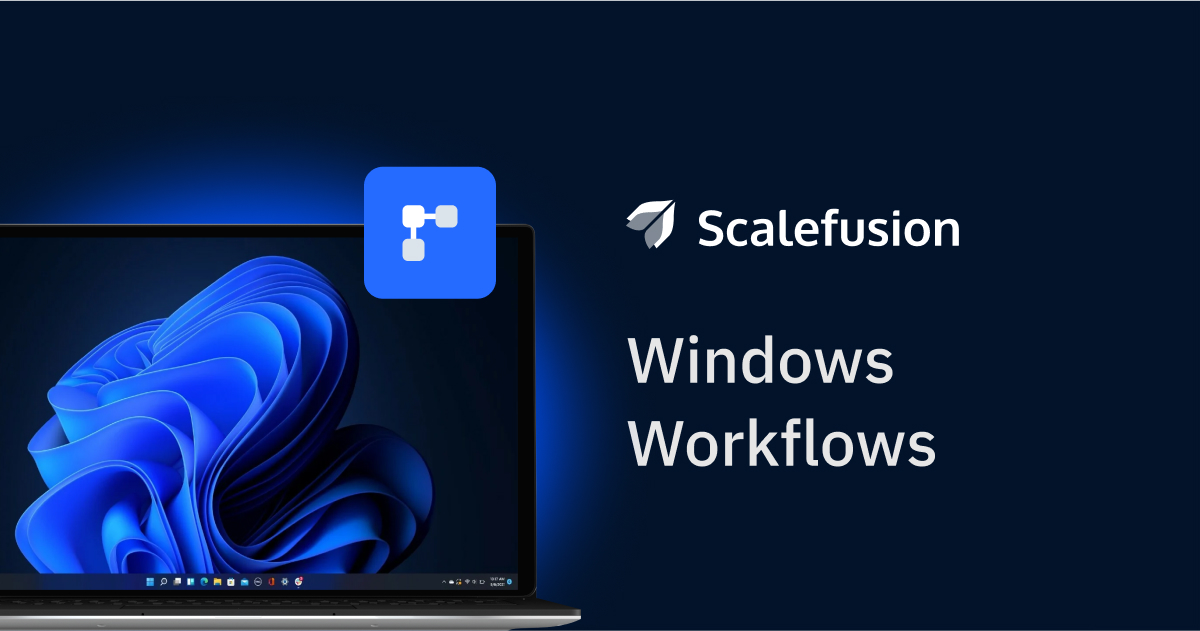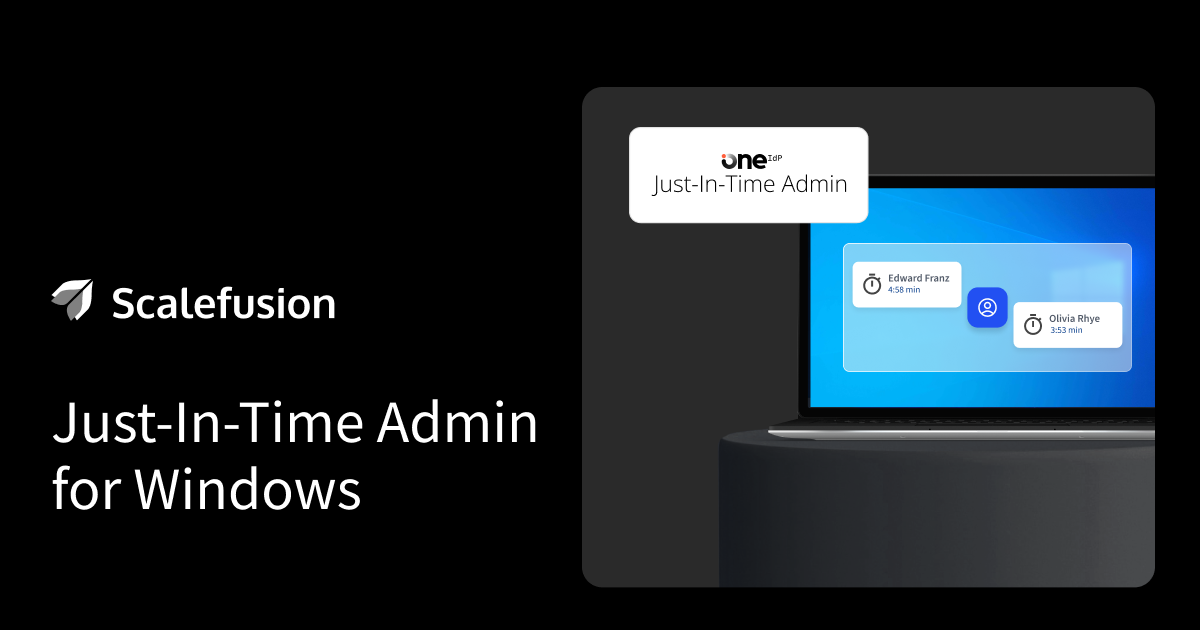The role of the Chief Security Officer (CSO) has evolved from its traditional focus on physical security, involving securing buildings, assets, and personnel, to taking on broader responsibilities that encompass comprehensive information security strategies.
This role shift was driven by the growing use of digital assets, and the importance of digital information and networks in business operations. This necessitates protecting sensitive data, devices, and systems from security breaches and ensuring compliance with data protection laws and organizational regulations.
This blog highlights how robust Mobile Device Management (MDM) software helps organizations adhere to compliance regulations.
CSO’s Role Today
Modern security officers are strategic leaders who align security initiatives with business objectives and industry regulations and manage physical and network security domains. They play an important role in crisis management, organizational resilience, and compliance management with evolving industry regulations.
Moreover, with remote and hybrid work models gaining weightage, employees can access corporate data from various devices and locations. The decentralized nature of remote work has scattered data, making it challenging to maintain data security and visibility. Consequently, IT leaders must emphasize continuous monitoring, risk management, and stringent access controls.
The transition from on-premise data storage to cloud-based solutions introduces additional security challenges. While cloud-based solutions offer scalability, flexibility, and cost savings, they are vulnerable to network-level threats such as malware and man-in-the-middle attacks and require rigorous security protocols to protect sensitive information.
Zero Trust Security: Trust Nobody, Verify Everyone
Zero Trust Security operates on the principle that no user, device, network, or location should be inherently trusted. By implementing a zero-trust model, organizations enhance security by assuming that every access attempt is potentially unauthorized until verified. This approach shifts the traditional perimeter-based security model to one that emphasizes strict access management based on identity verification and continuous monitoring.
Enforcing Zero Trust principles ensures that only authenticated users and devices can access company resources from authorized locations. This mitigates the risk of unauthenticated access and data breaches and aligns with legal and organizational compliance regulations that mandate secure access controls.
For example, on 14th September 2023, Saudi Arabia issued a Personal Data Protection Law (PDPL)[1]. According to PDLP, organizations must store their client data on-premise or in data centers within the shores, restricting data from exiting the country.
Granular Device Control
Granular device control is a necessity for compliance. Organizations can enforce stringent security policies and manage device configurations effectively. Administrators can implement specific measures, such as app blocking and URL filtering, to mitigate security risks.
By defining the security policies, organizations ensure that only approved applications are accessible and that employees adhere to guidelines for safe internet usage. This proactive management enhances data security and aligns with regulatory requirements demanding strict controls over data access and device usage.
Managing device configurations is another critical aspect of granular device control. Centralized management of settings like Wi-Fi configurations, VPN settings, and encryption protocols ensures all devices comply with organizational security standards and regulatory mandates. For instance, compliance frameworks like PCI-DSS necessitate encryption of data transmissions over public networks to protect sensitive transactional information from breaching.
In Bring Your Own Device (BYOD) environments, granular device control employs containerization to segregate corporate and personal data on devices. This segregation allows organizations to apply security policies selectively to corporate data without compromising employee privacy or infringing on personal use. Containerization addresses compliance concerns by safeguarding sensitive corporate information on personal devices, ensuring only authorized applications and data are subject to organizational security controls.
Identity and Access Management is Key
Identity and Access Management (IAM) stands as a cornerstone in organizations’ efforts to ensure compliance with stringent data privacy and security regulations. By implementing robust authentication mechanisms like multi-factor authentication (MFA), organizations bolster their defenses by allowing access to authorized users.
Multi-factor authentication (MFA) requires users to verify their identity using two or more factors, such as passwords, biometric data, or tokens, significantly reducing the risk posed by compromised credentials. This fortifies security and enables organizations to align with regulatory standards such as GDPR, which mandate stringent measures to safeguard data.
Additionally, Role-Based Access Control (RBAC) plays a pivotal role in maintaining compliance by restricting access to data and systems based on user roles and responsibilities within the organization. By adhering to the principle of least privilege, RBAC ensures employees only access information necessary for their job functions, thereby minimizing the exposure of company-sensitive data.
Regularly auditing user identity and access activities reinforce compliance efforts by enabling organizations to monitor access patterns, detect anomalies, and demonstrate adherence to regulatory requirements during audits and inspections. Together, these measures enhance data protection and foster trust with stakeholders by demonstrating a proactive approach to safeguarding sensitive information in line with regulatory limitations.
Data Protection and Encryption
As threat actors increasingly target vulnerable devices, security teams must ensure every device accessing their network has robust data protection and encryption controls in place. Encrypting data both at rest and in transit is essential for protecting sensitive information from leaking.
This ensures that data is unreadable and secure even if intercepted or accessed without authorization. Moreover, by encrypting every piece of data, security officers can ensure that even if a device is lost or stolen, the information remains inaccessible to unauthorized individuals. This is a critical component of compliance with regulations such as HIPAA and GDPR, which mandate the protection of patient and personal data, respectively.
Device Specific Compliance
Device-specific compliance protocols vary significantly between different platforms, such as Apple devices and Windows systems. While certain policies, like those governing password requirements, may apply universally, others necessitate a more nuanced and tailored approach. For instance, the integration of devices with authentication systems like Active Directory can differ greatly across operating systems.
Acknowledging the differences allows organizations to customize policies that address the unique strengths and vulnerabilities of each device and operating system. This customization ensures compliance measures are effectively implemented and aligned with the specific security frameworks and functionalities inherent to each platform. Organizations enhance security by tailoring policies that address these platform-specific nuances while maintaining regulatory compliance across their diverse IT environments.
How can CSOs be future-ready?
As we move forward, industry regulations are expanding and becoming more complex. Major regulations, like the EU’s AI Act which came into force in May 2024 have brought significant changes. Companies involved in AI development or use must review how they handle data, conduct audits of their algorithms, and ensure their AI systems maintain transparency and stay compliant with the AI Act.
Moreover, organizations should be prepared for state-specific regulations, such as the California Consumer Privacy Act of 2018, which grants consumers control over their personal information collected by businesses.
Chief security officers must be aware of the impending compliance laws and ensure their security strategies align with regulatory requirements. Staying ahead of these regulatory changes ensures security leaders are well-positioned to mitigate risks and capitalize on emerging opportunities in the advancing digital economy.
Drive Compliance with Scalefusion MDM
Enforcing stringent device and data security policies can elevate an organization’s security posture. An MDM solution like Scalefusion offers robust device management capabilities that enable businesses to protect data and adhere to compliance regulations.
Seamlessly drive compliance by reaching out to our experts for a free demo. Take a 14-day free trial now.
References
1. DLA PIER



